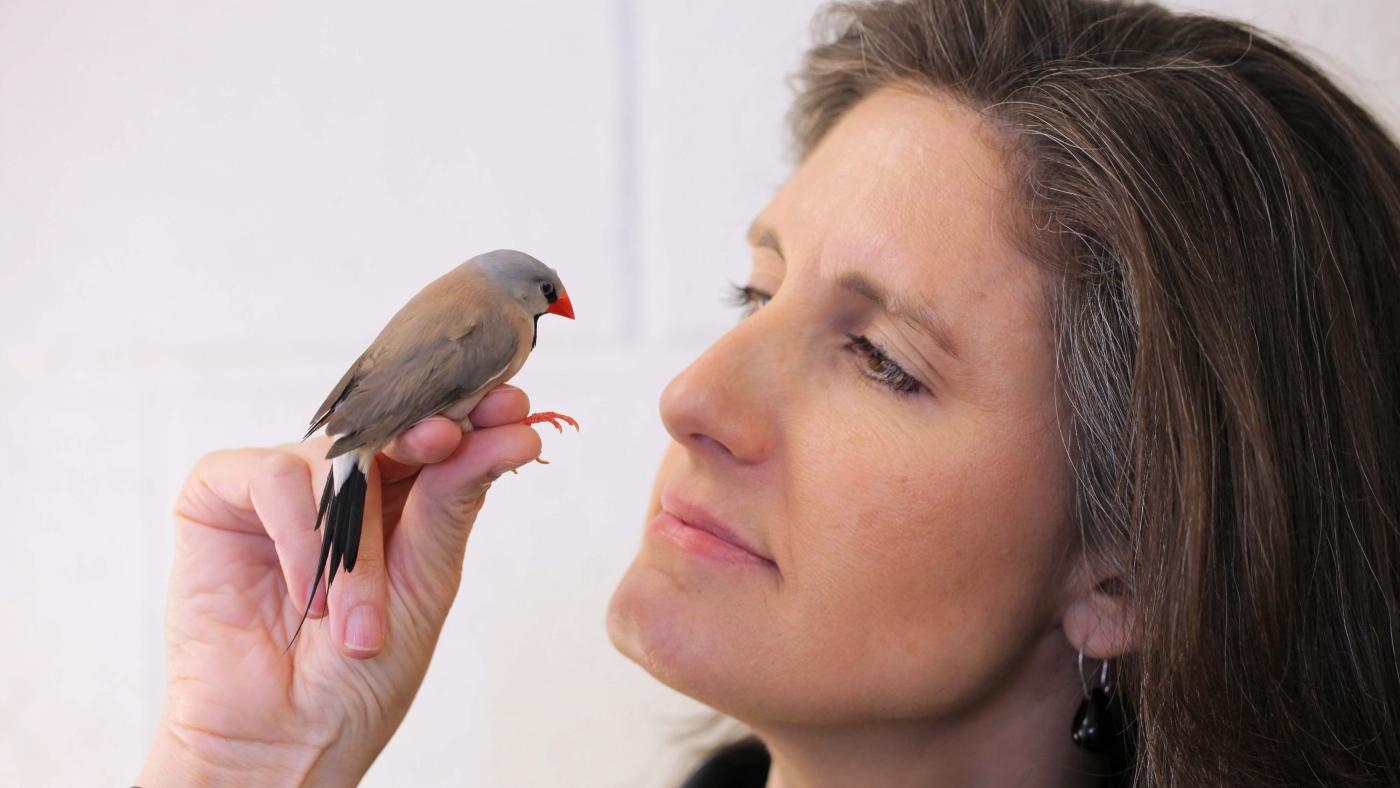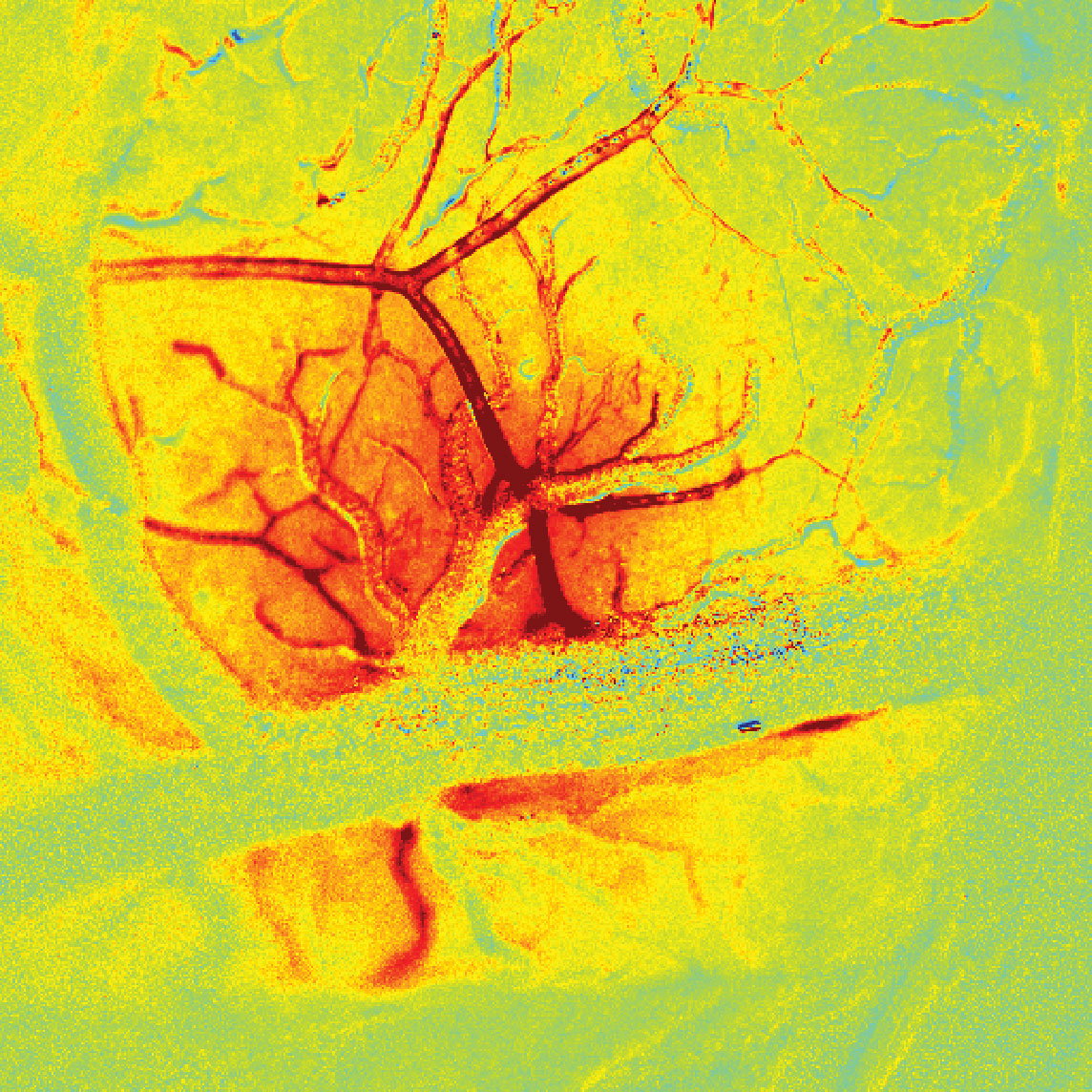“Why is the young brain so good at learning language?”
This was the question posed by Sarah Woolley, PhD, at the beginning of her Presidential Special Lecture last weekend at the 2016 Society for Neuroscience meeting in San Diego.
Addressing an audience of several thousand neuroscientists, Dr. Woolley shared her pioneering studies of auditory perception — the process by which the brain learns to interpret what it hears.
Beginning before birth, Dr. Woolley explained, an infant’s brain is influenced by hearing vocal sound, the vast majority of which comes from its parents.
There is something very special going on in the young brain. That is what we’re working to uncover.
“A baby can discriminate the sounds its mother makes even before it learns how to roll over,” said Dr. Woolley, a principal investigator at Columbia University’s Mortimer B. Zuckerman Mind Brain Behavior Institute and a professor of psychology. “There is something very special going on in the young brain. That is what we’re working to uncover.”
In her lab, Dr. Woolley and her team study different species of songbirds. Like humans, songbirds are well-known for employing so-called ‘vocal learning.’ Just as babies learn to speak through progressive stages of imitation and trial-and-error — from babbling to first words and, ultimately, sentences — songbirds do as well. These similarities, Dr. Woolley argues, make songbirds an idea model for investigating how early experience and auditory development work in tandem to build social communication skills.
Last year, she and her team uncovered a surprising similarity between bird and mammal brains. The mammalian brain contains a specialized circuit, known as the canonical cortical microcircuit, believed to be key to a mammal’s comparatively sophisticated cognitive abilities. But Dr. Woolley and her team published a study in 2015 that songbirds have a similar circuit, which allows them to receive and interpret complex sounds and, likely, develop complex behaviors — such as learning to sing.
Another major focus in her lab is studying how a songbird’s tune — which is distinct among species — is passed from parent to offspring. Baby songbirds normally learn to sing by mimicking their fathers. The ability to sing well proves critical as the young bird matures, as females choose mates based on the quality of song.
During the lecture, Dr. Woolley described a series of studies in her lab. In one, the eggs of one songbird species were placed in the nest of another. Because each song differs between species, the team wanted to see whether the newly hatched birds would learn the songs of their adoptive fathers instead of their biological fathers.
“And that is exactly what happened,” said Dr. Woolley. “The juvenile of one species copied the song of its adoptive father, even though its biological father was just across the room. This was a clear indication that close social contact was a critical component of vocal learning.”
This led Dr. Woolley and her team to ask how the brain was able to adapt.
“Our studies revealed that young birds could learn the songs of their adoptive fathers,” said Dr. Woolley. “But what was happening in their brains? We wanted to observe how the neurons involved in perceiving and interpreting these sounds, called auditory cortex neurons, functioned.”
In another series of studies, the researchers recorded the activity of these neurons in awake birds — both those who had been raised by parents of their same species, and those that had been adopted — while the team played various tones, in random sequences, over and over again.
“We were looking for patterns that may reveal differences between how each species of bird acquired song,” said Dr. Woolley. “For example, does one set of neurons respond to a particular tone in one species, but not the other?”
To their surprise, Dr. Woolley explained, the answer was no. The underlying mechanisms in the brain by which each species learned to sing were not revealed in the neurons’ responses to individual tones; nor could activity evoked by hearing those tones be used to distinguished between species.
“We learned that the birds’ capacity for learning emerges over time based on the sounds the birds are exposed to early on,” said Dr. Woolley.
These findings are in sync with observations in humans. For example, experts have long observed that babies adopted at a young age have the ability to pick up sounds and language from their adoptive parents just as easily as infants who were native born. Dr. Woolley’s findings offer clear and precise evidence that this may be due to the malleability of auditory cortex neurons in the infant brain. A malleability which, she notes, likely decreases with age — and what makes the young brain, she explained, so adept at learning.
Interestingly, said Dr. Woolley, work by a Columbia colleague Nima Mesgarani, PhD, an incoming principal investigator at the Zuckerman Institute and an assistant professor of Electrical Engineering at Columbia, has uncovered a similar though more sophisticated system in the human brain. She and Dr. Mesgarani are now interested in how this system changes as the brain matures.
“The future,” concluded Dr. Woolley, “lies in uncovering how we take this all-purpose sound processor we have at birth and, over time, end up with populations of neurons that are in fact finely tuned for the exact types of sounds that the brain uses communicate throughout its lifetime.”


